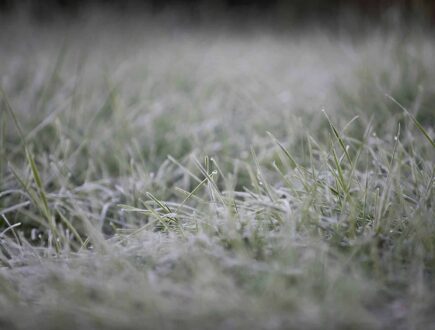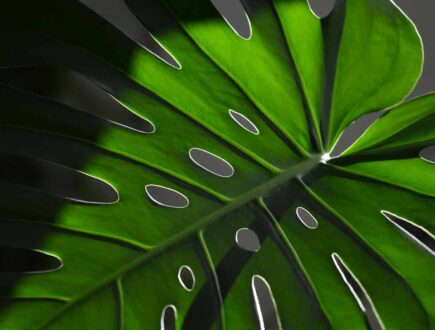Log in or create new account to save this product to your wishlist.

Tree Sapping: Why Can Trees Bleed After Pruning?
Tree sapping explained: Learn why some trees bleed sap after pruning and how to manage sap flow to keep your trees healthy.
🌱 All important maintenance moments for your lawn during the year. Leave your email and we will send you the lawn calendar for free.
Enter your email
Receive the lawn calendar in the mail
Enjoy a green lawn all year round!

- Order by 2PM = shipped today
- 250.000+ satisfied customers!
- 60 day satisfaction guarantee
Seeing sap drip from a freshly pruned tree can be surprising, but it’s actually a natural process called “bleeding.” This happens when pruning cuts expose the tree’s inner system of transporting water and nutrients, releasing sap in the process. Knowing why tree sapping happens can help gardeners make better choices about when and how to prune their trees.
Why trees produce sap
Tree sap is more than just sticky residue; it’s essential for tree health and growth. Sap flows through two main systems inside the tree: xylem and phloem. The xylem transports water and minerals from the roots up to the leaves, while the phloem carries sugars and other nutrients produced by photosynthesis to all parts of the tree.
The composition of sap varies with tree species, but typically it includes:
- Sugars: Glucose, sucrose, and fructose that serve as an energy source for the tree.
- Amino acids and organic compounds: Essential for growth and development.
- Minerals: Such as calcium and potassium that are necessary for overall health.
- Plant hormones: Which regulate growth and response to the environment.

Sap is crucial year-round, though its flow patterns and volume fluctuate with changes in temperature, humidity, and sunlight. During the active growing season, sap pressure is higher, supporting rapid growth and leaf production. In contrast, during dormancy in winter, sap flow is lower, helping trees conserve energy.
Why trees “bleed” after pruning
Pruning cuts expose the inner transport systems of the tree, causing sap to leak out. Trees are particularly prone to bleeding in late winter and early spring when they prepare for new growth, and sap flow is high. This timing can make even small cuts release noticeable amounts of sap, especially in species known for heavy bleeding.
Some trees are more susceptible to bleeding than others. Here’s a list of common “bleeders” that may lose significant sap after pruning:
- Birch and Maple: Known for their high sap content, especially in spring.
- Black Locust and Honey Locust: Both species are quick to bleed if pruned during high sap flow periods.
- Dogwoods and Magnolias: These decorative trees often lose sap after pruning, particularly when cuts are made in early spring.
- Elm, Walnut, and Willow: Trees that bleed heavily when cut during peak sap flow.
The sap flow following a cut can vary in intensity from a slow seep to a steady drip, depending on factors like the tree’s health, size, and recent weather. However, excessive bleeding, such as with birch and maple trees, can be minimised by pruning at the right time.

Is tree sapping harmful?
For most trees, sap leakage after pruning is not harmful and doesn’t indicate a problem. Sap release is a natural response that helps seal the wound, creating a barrier against infection. However, certain types of bleeding may suggest underlying health issues that require attention.
Look out for the following signs that may indicate a problem:
- Cloudy, discoloured, or foul-smelling sap: This could point to bacterial or fungal infections.
- Large or irregular wounds: If sap is flowing from a wound that seems unusual or damaged, it could indicate injury or disease.
- Associated symptoms: Signs such as wilting, yellowing, or early leaf drop may suggest more serious issues.
One condition linked to excessive sap flow is bacterial wetwood, also known as slime flux. This bacterial infection enters through wounds and increases pressure inside the tree, pushing sap out. While slime flux looks unsightly, it typically doesn’t threaten the tree’s life but can indicate stress or weakened health.
Tips to reduce tree sapping
Reducing sap flow isn’t just about timing. Good pruning techniques and tool maintenance play a significant role in minimising bleeding and promoting healthy recovery.
- Prune at the right time: Timing is one of the most effective ways to reduce bleeding. For deciduous trees, prune during winter dormancy, when sap flow is low. Evergreens generally respond well to early spring pruning, just as their growth cycle begins. Timing is especially important for species like Japanese maples and birches, which bleed heavily if pruned too close to the start of spring.
- Use sharp, clean tools: Sharp tools create clean cuts that heal faster and bleed less. Using clean and disinfected tools also reduces the risk of spreading disease between trees.

- Avoid wound sealers and paints: Applying wound sealers to stop sap flow is often counterproductive. These sealers trap moisture inside the wound, creating a breeding ground for fungi. Instead, allow the tree to dry naturally, which helps the tree’s own defences seal the wound more effectively.
- Leave enough wood for healing: A general guideline is to leave behind a stub of wood that’s about twice the diameter of the cut. This helps maintain the structural integrity of the tree, allowing it to heal effectively without compromising stability.
Tree sapping wrap up
Understanding why trees bleed after pruning gives gardeners insight into the tree’s natural processes. By adjusting pruning timing and techniques to suit each tree’s needs, you can help your trees stay healthy and thriving. Whether you care for a single tree or a whole garden, these practices make tree maintenance a smoother process and contribute to the tree’s long-term health.
Happy pruning!
-
Zero-Waste Gardening – This is How You Do It!Did you know that the average person wastes between 100 and 150 kilos of food every year? That's why the concept of zero-waste gardening is becoming increasingly important for environmentally conscious gardeners that like to do their gardening greener.Read more
-
How to Master Tree Pollarding: A Practical GuidePretty dense! What might be an insult to some, is certainly a compliment to trees. Through pollarding, you can make sure, your trees have a dense crown of beautiful leaves.Read more
-
Get Ready: Here are 5 Garden Trends for 2025Curious about the latest garden trends for 2025? From smart solutions to sustainable choices, discover all the outdoor trends that are transforming British gardens!Read more
-
How to Care for Plants in Winter: A Simple GuideWhen winter comes around, the care requirements of your plants change. Find out, how to adjust the care routine for your plants.Read more
-
Companion Planting Made Easy: A Step-by-Step TutorialStrategic plant partnerships can solve common gardening problems like pest invasion and disappointing yields. Find out which plants are great together in our companion planting guide.Read more
-
How to Grow Sweet Potatoes in Your GardenWant to know something splendid? A single sweet potato plant can produce 5 to 10 pounds (4.54 kg) of nutritious tubers—plenty to keep your family’s pantry well-stocked for weeks!Read more
-
Revive Your Lawn After Winter With These Easy StepsTired of winter lawn damage? Discover how to repair brown spots, remove weeds, and revitalise your grass for a thriving garden this spring.Read more
-
A Complete Guide On Lighting for Your House PlantsAchieve perfect lighting for houseplants! This guide covers light mapping, plant placement, and grow light tips to help your plants flourish indoors.Read more
Leave a comment
Your answer will be displayed on the site and the interested party will be notified by email.
Leave a comment
Have a question or want to share your experience? Leave us a comment.

- Order by 2PM = shipped today
- 250.000+ satisfied customers!
- 60 day satisfaction guarantee

- Order by 2PM = shipped today
- 250.000+ satisfied customers!
- 60 day satisfaction guarantee

- Order by 2PM = shipped today
- 250.000+ satisfied customers!
- 60 day satisfaction guarantee

🌱 All important maintenance moments for your lawn during the year. Leave your email and we will send you the lawn calendar for free.
Enter your email
Receive the lawn calendar in the mail
Enjoy a green lawn all year round!





















Comments (0)
There are no comments yet. Well then, what are you waiting for to
Be the first to write your comment!inaugurate this pretty page?
Do you have some comments?